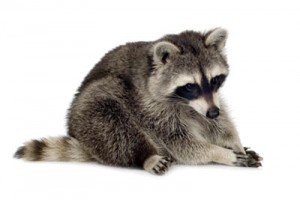Wellness – Dogs and Urban Wildlife
 Kevin T. Fitzgerald, PhD, DVM, DABVP
Kevin T. Fitzgerald, PhD, DVM, DABVP
Staff Veterinarian
VCA Alameda East Veterinary Hospital
Denver, Colorado
In the last 25 years, Denver and the entire front range has experienced phenomenal growth. Since 1950, the population of the city of Denver and its immediate suburbs has increased nearly two and a half times. Local locations that just twenty years ago seemed “way out in the country” are now home to housing developments, businesses, and shopping malls. As a result, areas that were once the sole domain of Colorado’s rich native wildlife have been transformed by development. Some of these creatures have shown remarkable resilience, however, and have been able to adapt to and even exploit their new urban environment.
As a small animal veterinary practitioner here in Denver over the last more than 30 years, we veterinarians have seen a definite rise in encounters (not always pleasant) between our companion animals and local native wildlife. Come with me on an “urban safari” and meet the species that can be potentially hazardous to your animals.
The city provides a surprising array of habitat for rabbits. Parks, golf courses, lawns, green belts, etc. supply plenty of suitable environments for rabbits to flourish. As their numbers rise, they naturally attract predators and natural enemies. Foxes can be found in good numbers in many Denver neighborhoods. These clever hunters have also learned that a fat cat on a back porch or an unprotected small dog is easier to poach than a speedy ground squirrel. Coyotes have likewise moved into our city limits and are in fact one of the few larger mammalian predators to have actively expanded their range in the last century. Raccoons can be spotted regularly in Denver. They have become masters at raiding garbage cans and these aggressive creatures can be a handful for a curious dog. Likewise, skunks are no stranger to the Mile High city. Not only can their smell be a nuisance to our dogs, but they will fight vigorously if cornered. In addition to these animals, our canines can also blunder into bats, porcupines, and rattlesnakes within easy view of the downtown skyline. Due to the presence of these animals, and for a variety of good reasons, it is not prudent to let a dog run at large. They used to say “It is ten o’clock, do you know where your kids are?” Certainly now this must apply to our dogs as well. Aside from the serious wounds the teeth and claws of wildlife can inflict, some of these animals carry serious diseases. Raccoons are a reservoir for canine distemper. Raccoons, bats, skunks, and foxes are the four species most commonly seen as a source of rabies in our state. To protect against the threat of urban wildlife, all of our dogs should be up-to-date on vaccines. Your veterinarian can help you if your dog is ever hurt, give you advice about areas to avoid, and is as far away as the telephone. Veterinarians can also help you assemble a first aid kit for your dog should anything happen. Enjoy Colorado’s wondrous outdoors with your dog; but be safe, be sensible, and be prepared.







